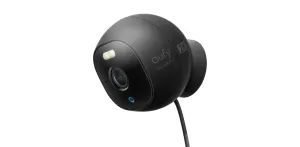The Magical World of Fisheye Photography
Remember when you first put your eye to one of those door peepholes and the world outside turned into a curious, distorted bubble? That was your world through a fisheye lens—wide, warped, and whimsically distorted. Bringing a fisheye camera into your photography arsenal isn’t just about adding a new piece of gear; it’s about opening your world to a whole new perspective. Let’s dive into how you can get the most out of that ultra-wide view and maybe have some fun along the way.
Understanding the Fisheye Lens
A fisheye lens is not just a quirky addition to your camera bag; it’s a full-blown invitation to see the world differently. Originally developed for astronomy photography and meteorology, these lenses capture a wide hemispherical image that normal lenses could never dream of fitting into their frame. The result? A unique, 180-degree panoramic perspective and a distinctive spherical effect that can turn an ordinary scene into a surreal snapshot. (digitalcameraworld.com)
There's something to be said about looking at the wave of roofs lined tightly next to each other or capturing an entire forest canopy in a single shot, all curving towards you as if beckoning you into a fairy tale. Using it effectively, though, can be as much an art as it is a technical skill.
Choosing the Right Moments for Fisheye Fun
Not every picture benefits from a fisheye lens—there, I said it. The trick isn't just to use it, but to know when it makes a difference. Here are a few scenarios where fisheye lenses truly shine:
- Skylines and Landscapes: Imagine capturing the entirety of New York City’s skyline in a single frame. That's fisheye for you!
- Action Sports: Ever watched those exhilarating skateboard videos or surfing shots where the world seems to rotate around the athletes? Yep, that's a fisheye's doing.
- Astro Photography: Capturing the night sky in its comprehensive glory often needs more than what a standard lens offers.
- Interior shots: Real estate photographers often turn to fisheye lenses to capture entire rooms and create a sense of space and depth.
But here’s a personal blooper: using a fisheye lens for close-up portraits led to some of the most unflattering, nose-enlarged photos of my friends. Lesson learned—keep the fisheye away from face-only shots unless you’re going for a laugh!
Composition Tips to Maximize the Fisheye Effect
Once you’ve picked a suitable subject, mastering the fisheye lens involves a bit of craft. Here are some composition tips that helped me move from fisheye fumbles to proficient panoramas:
- Center Your Subject: Due to the spherical nature of fisheye photos, placing your subject in the center can help maintain some normality in proportions, while still capturing those surreal edges.
- Look for Curves: Embrace the distortion. Curved lines on bridges, streets, and architecture accentuate the fisheye effect and pull the viewer’s eye throughout the photo.
- Get Low: Shooting from a lower angle with a fisheye lens exaggerates depth and leads to more dramatic shots, especially in crowded places.
- Utilize the Sky: Ample sky can act as a natural canvas for the dramatic arcs created by fisheye lenses, enhancing the mood of your photos.
Technical Tweaks for the Perfect Shot
Getting to grips with the technical side of using fisheye lenses made a huge difference in my shots. Here's what you need to know:
- Manual Focus: Auto-focus might get confused with the vast expanse that the fisheye sees. Switch to manual focus for better control.
- Aperture Settings: A smaller aperture (higher f-number) generally provides sharper images across the entire image, especially the edges.
- ISO and Shutter Speed: Since everything is in focus, it’s safe to play around with slower shutter speeds and lower ISO for cleaner images.
Remember, the blend of technical settings will depend heavily on your lighting conditions and the effect you aim to achieve.
Experiment, Experiment, Experiment!
The true charm of fisheye photography lies in its unpredictability and the playful distortion it brings into the mundane. Experimenting with angles and contexts has led me to some of my most compelling shots—like the time I captured a dog jumping towards the camera, turning it into a comical scene right out of a cartoon.
The key is to keep experimenting. Try angles you think won’t work, capture scenes that seem ordinary, switch up your compositions. Every frame teaches you something new about the capabilities and creative potential of your fisheye.
Your Fisheye, Your World
Taking on fisheye photography is like choosing to wear rose-colored glasses—everything feels a bit whimsical, possibly distorted, but infinitely interesting. Whether it's the breathtaking sprawl of a star-filled sky, the sprawling landscape from atop a mountain, or simply the peculiar look of your street from your doorstep, fisheye lenses remind us of the beauty in perspectives, both big and small.
So, grab that fisheye lens, and let’s turn the world into our bubble—distorted, panoramic, and beautifully unique. Keep shooting and let every click widen your view and your imagination!
Final Shot: Embrace the Curve
Remember, whether you’re delving into professional photography or just sprucing up your Instagram feed, a fisheye lens offers more than a quirky shot. It opens up new avenues for creative expression, pushing the boundaries of typical photography.
Always seek to learn more techniques, be bold in your experiments, and let your curiosity lead the way. And really, isn’t that a bit like life? Sometimes, a change in perspective is all you need to discover the beauty in the expansive and the minute details alike. Why not start this journey with your camera?





